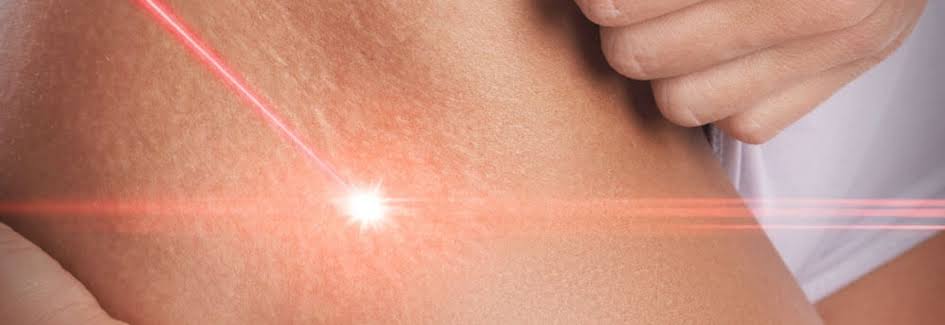Sometimes, as you put on weight or lose weight as the case may be, stretch marks are bound to happen. Stretch mark is a common occurrence in people of all race and gender, though, it is more common in females and more visible in people with darker skins. Stretch marks aren’t harmful or bad, but the general perception that they are ‘ugly marks’ and the body shaming associated with it can have negative effects on people’s mental and emotional well-being. For example, it can lead to low self esteem as the individual ‘hates’ his/ her body and tries to cover up those marks. This is more common among the female gender.

Stretch marks also called striae aren’t ‘ugly marks’ that appears on your body. It’s just a sign that your body is going through growth changes. These changes causes your skin to expand/stretch as is the case with an adolescent going through growth spurt, a pregnant woman who puts on weight as her body changes, a man working out to put on more muscle, and so on. So as you put on weight or as you grow, your skin stretches to accommodate these changes.
Normally, any material that keeps expanding gets to a point where it tears, but in the case of the skin, two types of protein, collagen and elastin, helps keep it taut and also flexible ( a reason they are artificially added to some body creams). When the skin undergoes rapid changes, the collagen and elastin which are responsible for keeping the skin taut and flexible are not able to keep up with this rapid change. The skin can’t stretch enough and as a result, the supporting layers of the skin are torn. Stretch marks are the ‘marks’ left behind from this ‘overstretching’ or ‘tearing’.
Blood flow to these tears can make the marks appear purplish-red at first, the area could also feel raised and itchy but as time goes on, the mark fades and the raised area feels hollow and smooth. Weight loss can make them become more obvious as the skin sags.
Stretch marks occurs on any area of the skin but the areas most susceptible to stretching are those over the hips, thigh, back, breast, buttocks, upper arm and abdomen. Some factors puts one at higher risk of having stretch marks, some of which have been mentioned before. They include;
– Pregnancy. This is the most common cause of stretch marks in women. The abdomen is mostly affected due to its rapid expansion. Other parts of the body too can be affected as a result of weight gain in pregnancy. Due to a more tender skin, women who get pregnant at a younger age are prone to more stretch marks than women who get pregnant at an older age.
– Medical conditions such as Cushing’s syndrome ( which can lead to rapid weight gain), Marfan syndrome ( which leads to decreased elasticity of the skin) and Ehlers-Danlos syndrome ( a disorder that causes the skin to be abnormally elastic due to a defect in the production of collagen).
– Rapid weight gain and weight loss.
– A family history of stretch marks.
– Puberty. Adolescents have a tendency to develop stretch marks due to the growth spurt during this period.
– Obesity.
– Surgical implants like breasts and buttocks implants.
– Side effect of the use of certain topical corticosteroids ( i.e. medications used to treat skin diseases like rash and eczema).
– Muscle building and the use of steroids
Can stretch marks be treated?

Using laser to treat stretch marks
There is no permanent solution to stretch marks but there are various treatments that can help to make them fade and less noticeable. Some of them include;
– Applying lotions containing retinoid. This can help rebuild collagen ( it shouldn’t be used for pregnant women or nursing mothers). It is important to note that skin irritation is a possible side effect
– Hyaluronic acid cream or medications. They can help stimulate collagen production .
– Natural remedies like coconut oil, almond oil, olive oil, Shea butter and aloe vera can help to moisturize the skin.
– Laser therapy
Note that these treatment should be done at the onset of the stretch marks to make them less noticeable because once the mark forms deep into the skin, treatment hardly works. There are several other procedures that a dermatologist can carry out to help treat stretch marks though they could be costly and you should also put your skin type and age into consideration before undergoing such procedures. You should discuss your options with your doctor.
On the bright side, stretch marks fade over time till they are less noticeable and shouldn’t be something to worry about and whatever you choose to do with them in terms of treatment or leaving them alone is up to you. The most important thing is don’t let it bruise your self. esteem.

Oyewole Ibukun is currently a Medical student of Olabisi Onabanjo University. She has a passion for seeking knowledge with a creative, detail oriented and analytical mindset.

